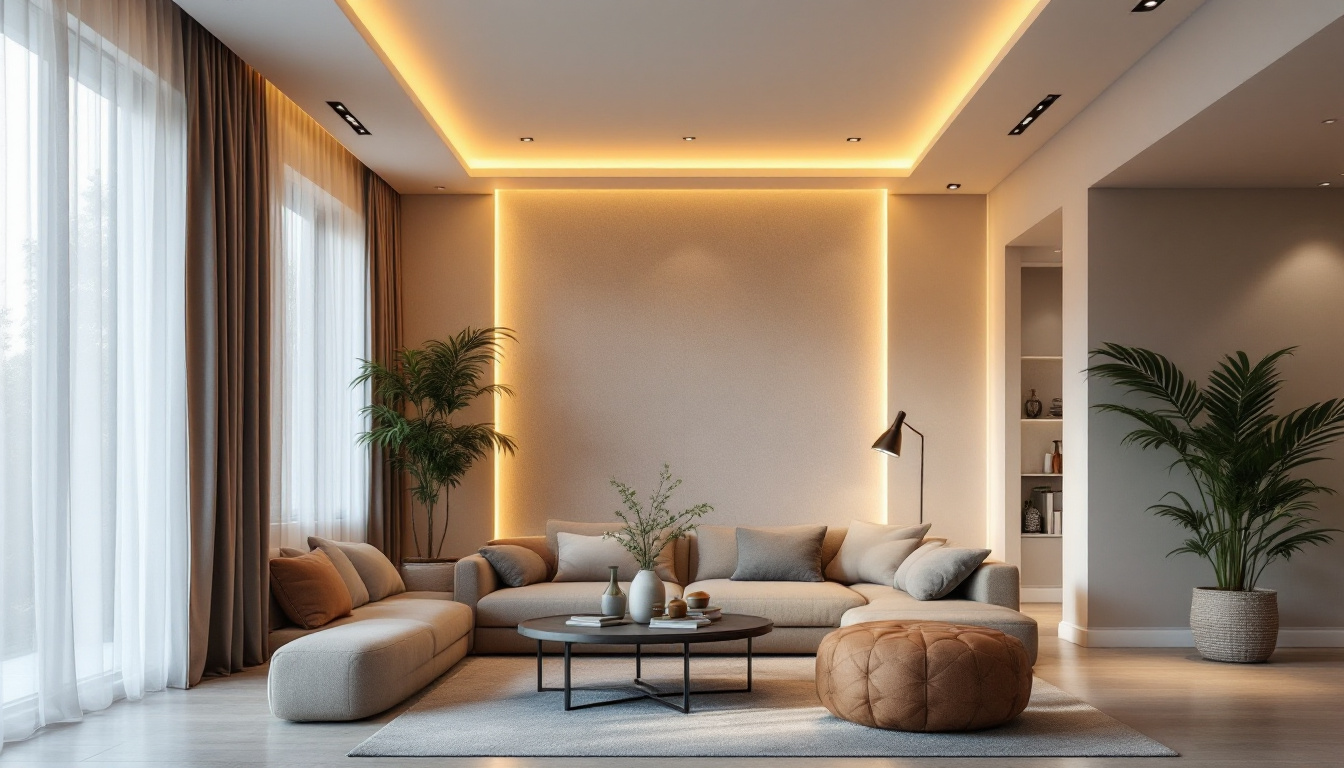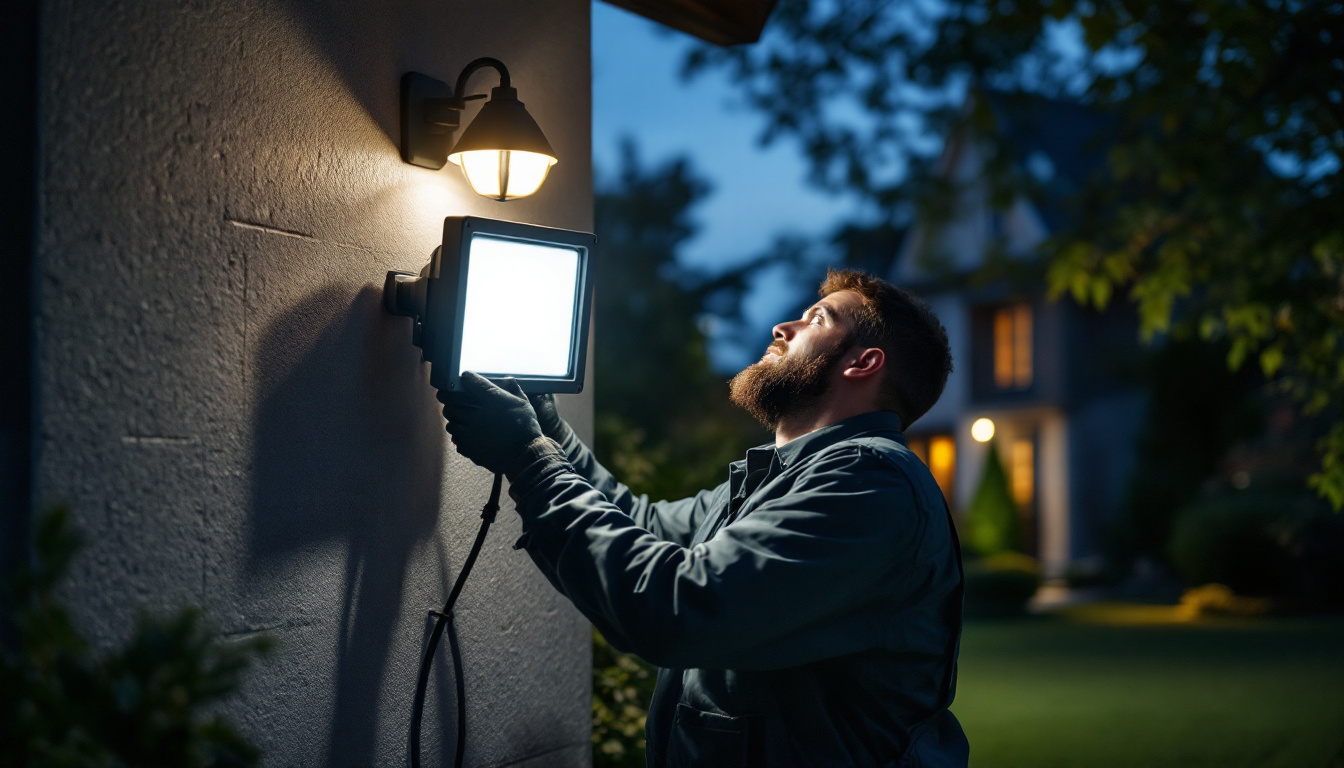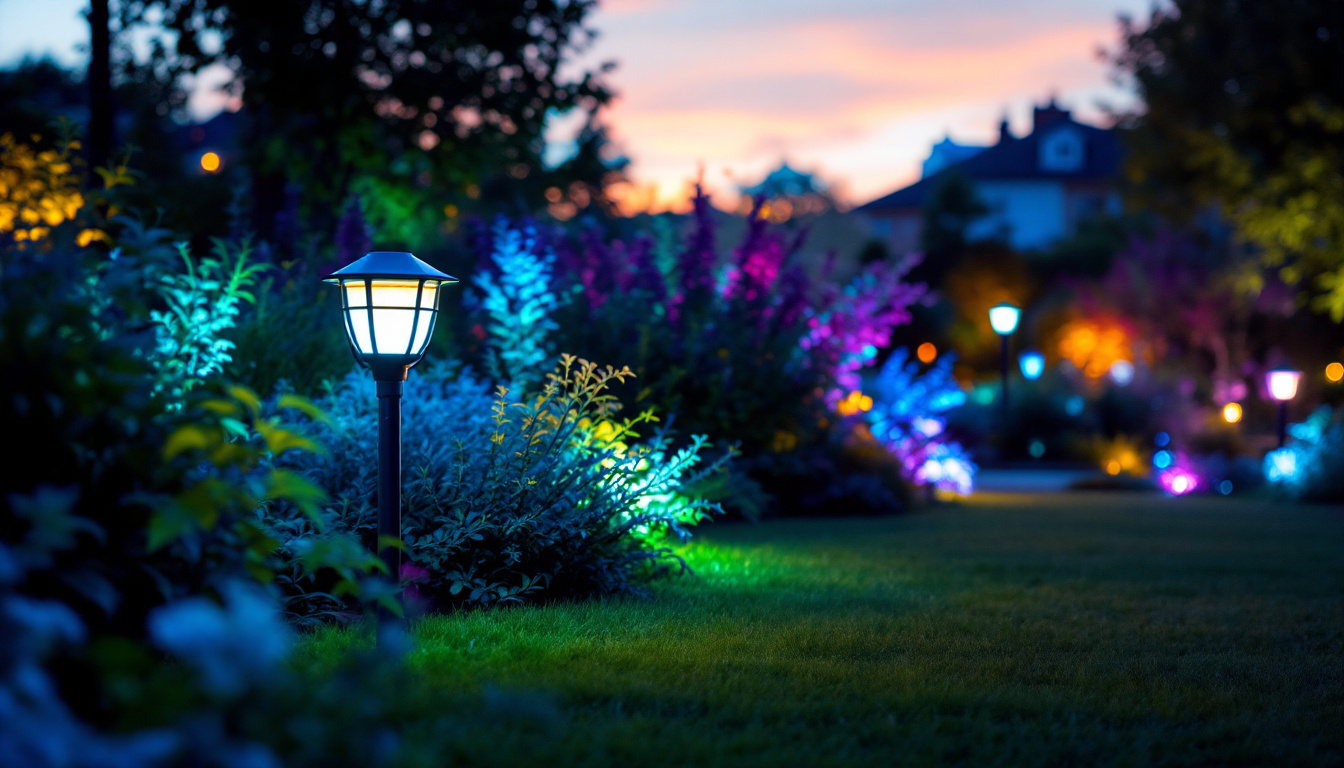
recessed lighting, often referred to as can lighting or pot lighting, is a popular choice among contractors and designers for its sleek, unobtrusive appearance. This type of lighting is installed into the ceiling, creating a streamlined look that enhances the overall aesthetic of a space. It allows for flexibility in design and can be used in various settings, from residential homes to commercial spaces.
One of the primary advantages of recessed lighting is its ability to provide ambient, task, or accent lighting without taking up valuable space. By being flush with the ceiling, it creates an illusion of height and openness, making rooms feel larger and more inviting. However, the success of a recessed lighting project hinges on selecting the right fixtures and bulbs.
When choosing recessed lighting, it is essential to consider the type of trim and bulb that will best suit your needs. For instance, adjustable trims can direct light where it is needed most, making them ideal for highlighting artwork or architectural features. On the other hand, baffle trims can help reduce glare, creating a softer light that is perfect for living areas. Additionally, the choice between LED and incandescent bulbs can significantly impact energy efficiency and the quality of light produced. LED bulbs, for example, not only consume less energy but also have a longer lifespan, making them a cost-effective option in the long run.
Furthermore, the placement of recessed lights plays a crucial role in achieving the desired lighting effect. A well-thought-out layout can enhance the functionality of a room while ensuring that the light is evenly distributed. For instance, in a kitchen, strategically placed recessed lights can illuminate work surfaces, while in a home theater, dimmable options can create the perfect ambiance for movie nights. It is also important to consider the height of the ceiling; higher ceilings may require deeper fixtures to ensure adequate light coverage. Ultimately, careful planning and consideration of these factors can transform a space, making recessed lighting a versatile and stylish choice for any design project.
When it comes to recessed lighting, the fixture itself plays a crucial role in the overall effectiveness and aesthetic of the lighting design. There are several factors to consider when selecting the best lights for recessed applications.
Recessed lighting fixtures come in various types, each designed for specific applications. The most common types include:
The size of the recessed lighting fixture is another critical consideration. Common sizes include 4-inch, 5-inch, and 6-inch diameters. The choice of size often depends on the application and the desired light output. A larger fixture typically provides a broader beam spread, while smaller fixtures can create a more focused light.
In addition to size, trim options also play a significant role in the overall look of the lighting. Trims come in various finishes, including white, black, and metallic, allowing for customization to match the room’s decor. Some trims also offer features like baffles or reflectors, which can help control glare and improve light distribution.
The type of bulb used in recessed lighting fixtures can greatly influence the quality of light produced. Different bulbs have varying color temperatures, brightness levels, and energy efficiencies, making it essential to choose wisely.
LED bulbs have become the go-to choice for recessed lighting due to their energy efficiency and longevity. They consume significantly less energy than traditional halogen or CFL bulbs and can last for years, reducing the frequency of replacements. Additionally, LED bulbs are available in a wide range of color temperatures, allowing for customization of the ambiance in any space.
Halogen bulbs, while providing excellent color rendering and brightness, tend to consume more energy and have a shorter lifespan compared to LEDs. They also generate more heat, which can be a concern in enclosed spaces. CFLs are another option, but they are less commonly used in recessed lighting due to their slower warm-up time and limited color temperature options.
Color temperature is measured in Kelvins (K) and affects the mood of a space. Warmer temperatures (2700K-3000K) create a cozy atmosphere, making them ideal for living areas and bedrooms. Cooler temperatures (4000K-5000K) are better suited for task-oriented spaces like kitchens and offices.
Brightness is measured in lumens, and selecting the right lumen output is crucial for achieving the desired lighting effect. A general guideline is to aim for 100-200 lumens per square foot, but this can vary based on the specific application and personal preference.
Proper installation is vital for the success of recessed lighting projects. Several factors must be taken into account during the installation process to ensure optimal performance and safety.
Ceiling height plays a significant role in determining the placement and spacing of recessed lights. For standard 8-foot ceilings, fixtures should typically be spaced about 4-6 feet apart. In higher ceilings, the spacing may increase to maintain an even distribution of light.
It’s also essential to consider the beam angle of the bulbs being used. A narrower beam angle may require closer spacing, while wider angles can be spaced further apart. This ensures that the light is evenly distributed throughout the space without creating dark spots.
Recessed lighting requires careful electrical planning to ensure safety and compliance with building codes. It’s crucial to assess the existing electrical system and determine if it can support the additional load of the new fixtures. In some cases, it may be necessary to upgrade the circuit or install a dedicated line for the recessed lights.
Additionally, using dimmer switches can enhance the versatility of recessed lighting, allowing for adjustable brightness levels to suit different activities and moods. However, it’s important to ensure that the dimmer is compatible with the chosen bulbs, especially when using LED fixtures.
Incorporating recessed lighting into a design project requires a thoughtful approach to achieve the desired ambiance and functionality. The strategic placement of fixtures can dramatically transform a space.
Recessed lights can be used to create stunning accent lighting, highlighting architectural features, artwork, or decorative elements. By using adjustable fixtures, contractors can direct light to specific areas, drawing attention to focal points within the room.
When designing for accent lighting, it’s essential to consider the intensity and angle of the light. A well-placed recessed light can add depth and dimension, enhancing the overall visual appeal of the space.
A successful lighting design often incorporates a layered approach, combining ambient, task, and accent lighting. Recessed lighting can serve as a key component of this strategy, providing a uniform wash of light while allowing for additional layers to be added through other fixtures such as chandeliers, wall sconces, or table lamps.
By thoughtfully integrating recessed lighting with other light sources, contractors can create a well-balanced environment that meets both functional and aesthetic needs. This approach not only enhances the usability of the space but also contributes to a more inviting atmosphere.
Even experienced contractors can fall prey to common pitfalls when working with recessed lighting. Being aware of these mistakes can help ensure a successful project outcome.
One of the most frequent mistakes is improper spacing of recessed lights. Too few fixtures can lead to inadequate lighting, while too many can create an overly bright and harsh environment. A well-planned layout that considers the size of the room, ceiling height, and beam angle is essential for achieving the desired effect.
Another common oversight is failing to incorporate dimming options into the design. Dimmers allow for flexibility in lighting levels, enabling users to adjust the ambiance according to their needs. This feature can significantly enhance the functionality of recessed lighting, making it suitable for various activities.
Maintaining recessed lighting is crucial for ensuring longevity and optimal performance. Regular upkeep can prevent issues such as flickering lights or reduced brightness over time.
Dust and debris can accumulate on recessed light fixtures, affecting their performance and appearance. Regular cleaning is essential to keep them looking their best. A simple dusting with a microfiber cloth can help maintain the fixture’s finish and ensure maximum light output.
For fixtures using traditional bulbs, timely replacement is necessary to maintain consistent lighting levels. LED fixtures typically have a longer lifespan, but it’s still important to monitor their performance and replace them as needed. Keeping an eye on the color temperature and brightness can help identify when a bulb needs replacement.
Choosing the best lights for recessed lighting is a critical aspect of successful lighting projects. By understanding the various types of fixtures, selecting the appropriate bulbs, and considering installation and design elements, contractors can create stunning and functional spaces that meet the needs of their clients.
With careful planning and attention to detail, recessed lighting can transform any area, providing both aesthetic appeal and practical illumination. By avoiding common mistakes and prioritizing maintenance, contractors can ensure that their recessed lighting projects are not only beautiful but also long-lasting.
Ready to elevate your lighting projects with the best recessed lighting solutions? Look no further than LumenWholesale, where we provide contractors with high-quality, specification-grade lighting products at unbeatable wholesale prices. Our extensive selection is designed to meet the highest industry standards, ensuring you get reliable and high-performance lighting for every project. Plus, with free shipping on bulk purchases, you can enjoy premium lighting at the best value — without hidden fees or compromises. Don’t miss out on the perfect blend of quality, affordability, and convenience. Visit LumenWholesale today for Wholesale Lighting at the Best Value and transform your space with confidence.

Discover how lighting contractors can seamlessly integrate solar-powered grow lights into their projects while avoiding common pitfalls.

Discover why staying updated with Keystone Tech is essential for every lighting contractor.

Discover essential insights into outdoor LED flood lights that every lighting contractor needs to know.

Explore the transformative journey of landscape LED lights and their impact on the lighting industry.